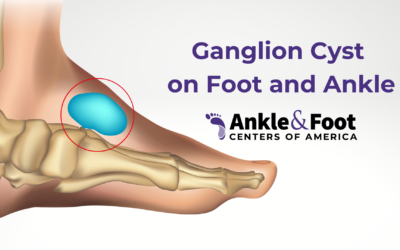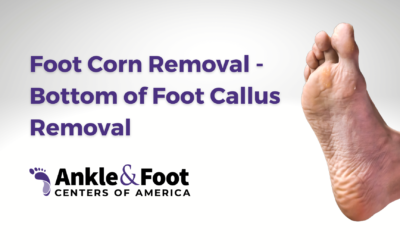Choosing the right pair of shoes for your feet can make all the difference in your comfort and well-being. The right pair of shoes can help prevent foot problems and provide the necessary support for your feet to stay healthy. On the other hand, wearing shoes that don’t fit properly or provide adequate support can lead to various foot problems. In this blog post, we’ll guide you through the process of choosing the best shoes for your feet.
ASSESSING YOUR FOOT TYPE
 Understanding your foot type is the first step to choosing the right shoes for your feet. There are three types of feet: flat feet, high arches, and neutral arches. Flat feet have no visible arch, high arches have an arch that is higher than normal, and neutral arches have a moderate arch. Identifying your foot type can help you choose the right shoes for your feet. For example, those with flat feet may benefit from shoes with more arch support, while those with high arches may benefit from shoes with extra cushioning.
Understanding your foot type is the first step to choosing the right shoes for your feet. There are three types of feet: flat feet, high arches, and neutral arches. Flat feet have no visible arch, high arches have an arch that is higher than normal, and neutral arches have a moderate arch. Identifying your foot type can help you choose the right shoes for your feet. For example, those with flat feet may benefit from shoes with more arch support, while those with high arches may benefit from shoes with extra cushioning.
It’s also important to identify any common foot problems that need to be addressed. If you have bunions, hammertoes, or plantar fasciitis, you may need shoes with extra cushioning or wider toe boxes to accommodate these issues.
UNDERSTANDING SHOE ANATOMY
The anatomy of a shoe is made up of different parts, each with its own unique function. Understanding the different parts of a shoe can help you identify the features that are most important to you. For example, the sole of a shoe affects the shoe’s stability and traction, while the upper material affects breathability and durability.
The midsole is also an important part of the shoe that affects cushioning and support. Different materials can be used in the midsole to provide varying levels of cushioning and support. Some shoes have removable insoles that can be replaced with custom orthotics to provide even more support.
CHOOSING THE RIGHT SHOE STYLE
 Choosing the right shoe style depends on your foot type and the activity you’re engaging in. Athletic shoes are designed to provide stability and support during physical activity. Dress shoes are designed for more formal occasions and typically have a more narrow toe box. Sneakers and casual shoes are more versatile and can be worn in various settings.
Choosing the right shoe style depends on your foot type and the activity you’re engaging in. Athletic shoes are designed to provide stability and support during physical activity. Dress shoes are designed for more formal occasions and typically have a more narrow toe box. Sneakers and casual shoes are more versatile and can be worn in various settings.
If you have foot problems or special requirements, there are shoes designed specifically for these issues. For example, diabetic shoes are designed with extra cushioning and support to prevent foot ulcers, while shoes for plantar fasciitis have extra arch support to alleviate pain.
GETTING THE RIGHT FIT
 Getting the right fit is essential to finding a comfortable pair of shoes. Measuring your foot size and width is the first step. When trying on shoes, it’s important to try on both shoes and walk around to get a sense of how they feel. Proper fit includes ensuring there is enough space for your toes to move around, a secure fit around the heel, and adequate support and cushioning.
Getting the right fit is essential to finding a comfortable pair of shoes. Measuring your foot size and width is the first step. When trying on shoes, it’s important to try on both shoes and walk around to get a sense of how they feel. Proper fit includes ensuring there is enough space for your toes to move around, a secure fit around the heel, and adequate support and cushioning.
Some shoes may require a break-in period, but you should never buy shoes that are uncomfortable or painful to wear. Shoes that are too tight or too loose can cause blisters, calluses, and other foot problems.
FEATURES TO LOOK FOR IN A GOOD QUALITY SHOE
A good quality shoe should provide adequate support, cushioning, breathability, flexibility, and durability. Support refers to the shoe’s ability to provide stability for your feet, while cushioning refers to the shoe’s ability to absorb shock. Breathability is important to ensure your feet don’t get too hot or sweaty. Flexibility allows for natural foot movement, while durability ensures the shoe will last a long time.
Shoes with high-quality materials and construction are generally more expensive, but they can be worth the investment in the long run. High-quality shoes are less likely to cause foot problems and can last for years.
MAINTAINING YOUR SHOES
Proper care and maintenance of your shoes can prolong their lifespan. Cleaning your shoes regularly and protecting them from extreme temperatures and moisture can help keep them in good condition. Leather shoes, for example, require regular conditioning to prevent cracking and drying out.
Knowing when it’s time to replace your shoes is also important. Signs that it’s time to replace your shoes include visible wear and tear, a loss of cushioning, or discomfort while wearing them. In general, shoes should be replaced every 300-500 miles of wear, or every 6-8 months, whichever comes first.
CONCLUSION
Finding the best shoes for your feet is crucial for your overall foot health and comfort. Understanding your foot type, the anatomy of a shoe, and the features to look for in a good quality shoe can help you make an informed decision when shopping for shoes. With the right pair of shoes, you can ensure your feet stay healthy and comfortable for years to come.
Investing in high-quality shoes may be more expensive upfront, but it can save you money in the long run by preventing foot problems and reducing the frequency of shoe replacements. Proper care and maintenance of your shoes can also prolong their lifespan, saving you money in the long run.
Remember to measure your feet regularly to ensure you’re wearing the right size and to consider any foot problems or special requirements when choosing shoes. By following these guidelines, you can choose the best shoes for your feet and enjoy comfortable, healthy feet for years to come.




